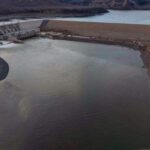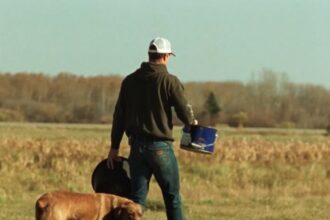In an unprecedented move reflecting the severity of current environmental conditions, New Brunswick officials have ordered the closure of all Crown lands and trails across the province as extreme wildfire hazards reach critical levels. The sweeping restriction, which took effect Thursday at 3 p.m. local time, represents one of the most extensive public land closures in recent provincial history.
“The conditions we’re facing aren’t just concerning—they’re downright dangerous,” said Mike Holland, Minister of Natural Resources and Energy Development, during Thursday’s emergency press briefing. “When humidity drops below 30 percent and winds pick up, we’re essentially looking at a tinderbox situation across our forests.”
The closure affects approximately 3.3 million hectares of Crown land—roughly 48 percent of the province’s total area—including popular hiking destinations, camping areas, and recreational trails. Provincial officials emphasized that the restriction applies to all activities on Crown land, including hiking, camping, fishing, and ATV use.
Fire prevention experts at the Department of Natural Resources report that forest floor moisture levels have reached critically low measurements not seen in over a decade. The province’s fire danger rating currently sits at “extreme” for nearly 80 percent of New Brunswick’s territory.
“What makes this situation particularly alarming is both the speed at which conditions have deteriorated and the geographic extent of the risk,” explained Dr. Amanda Richardson, forest ecology specialist at the University of New Brunswick. “We’re not talking about isolated hot spots—the entire province is essentially primed for ignition.”
The announcement comes as firefighting resources are already stretched thin across Atlantic Canada, with multiple active wildfires requiring attention in neighboring Nova Scotia. Provincial officials confirmed that five small wildfires have been extinguished in New Brunswick over the past 72 hours alone.
For rural communities that depend on Crown land access for traditional activities, the closure represents both a safety measure and an economic challenge. The tourism sector faces particular uncertainty as the restriction arrives just as the summer vacation season begins.
“We absolutely support prioritizing safety, but there’s no denying this creates complications for businesses already dealing with post-pandemic recovery,” noted Sarah McIntyre, executive director of the New Brunswick Tourism Industry Association. “Outfitters, guides, and accommodation providers near Crown lands will need to adapt quickly.”
Provincial enforcement officers have been deployed to key access points throughout New Brunswick to ensure compliance with the closure. Violators face potential fines starting at $1,000 for individuals found on Crown land during the restriction period.
Weather forecasts offer little immediate relief, with meteorologists predicting continued dry conditions across the province through at least the next week. Provincial emergency management officials indicate the closure will remain in effect until significant rainfall improves conditions.
“The decision to close such a substantial portion of public lands isn’t made lightly,” Holland added. “But when you consider the potential consequences of a major wildfire—the threat to homes, wildlife habitat, and human safety—there really wasn’t another responsible choice available to us.”
As New Brunswick implements these protective measures, questions emerge about the long-term implications of increasingly frequent extreme weather patterns across Atlantic Canada. With climate scientists projecting more volatile weather systems in coming years, will this type of large-scale preventive closure become a regular feature of Maritime summers?
























